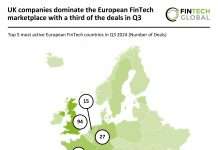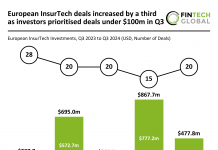Advances in technology is making applying machine learning to pricing processes in insurance easier. According to Akur8, actuaries can benefit greatly from its adoption.
Machine learning is quickly entering the insurance space, and this opens up exciting new opportunities for the industry.
In a recent paper, Akur8 championed the use of such technologies and provided guidelines for how companies can incorporate machine learning techniques into pricing applications.
One common hurdle to employing modelling or machine learning, according to Akur8, is the lack of data. The company said this viewpoint is often based on antiquated assumptions about machine learning algorithms and the intended purpose of their output.
However, by applying machine learning techniques such as penalised regression, which behaves consistently with standard credibility models, machine learning can limit the noise from thin data and be used on datasets that were previously too small to be considered.
Additionally, Akur8 said the intended purpose of a machine learning analysis can be expanded from creating final implementation recommendations to providing teams with the best data-driven point to start additional analysis.
Making this adjustment, Akur8 continued, allows machine learning techniques to be applied to everyday work and provides teams with the best, most data-driven starting point for analysis. Machine learning has too much potential for pricing departments not to take advantage, Akur8 said, and this applies to small, medium and large data sets.
Using machine learning models can significantly change the actuarial experience. Akur8 said that often, this results in a perceived loss of control due to automation. The separation of purely data-driven decisions and business decisions is key when adopting a machine learning approach.
A key benefit here, Akur8 said, is that a decision can be purely data-driven, removing human biases from the process. A user can still change the selection afterwards if necessary, hence Akur8 argues there is not an actual lack of control but rather a more informed starting point.
In addition, a misconception may be that actuarial teams require less technical knowledge as a result of integrating machine learning into these processes. However, Akur8 said this is not the case. An actuary still needs sufficient technical skills. Deploying machine learning into the process will allow them to use their technical skills in a more meaningful way.
However, Akur8 said that a prerequisite to all the above, is that the machine learning is transparent.
This can be difficult with black box models, as it is not immediately clear what is happening within the black box to cause the models to produce different scores for the similar risks. When using black box models, Akur8 said an actuary must also take into consideration the possibility for hidden behaviours that are unintuitive at best and dangerous at worst. Within a black box model, it is nearly impossible to prove that unintuitive behaviour is not happening.
Whereas transparent machine learning algorithms allow an actuary to easily interpret the actuarial soundness of a model and greatly speeds up the internal and external approval process.
Akur8 said that while it is uncertain how the industry will move forward to address issues of equity and disparate impact, transparent machine learning clearly has an advantage over black box methodologies in the ability to be explained and validated.
Saying this, transparent machine learning algorithms will still be as biased as the data going into them, but this is not hidden by black box methodology.
In conclusion, Akur8 said the proper application of machine learning will meaningfully change a team’s work experience, but it will not dilute the importance of industry knowledge. Machine learning is no longer just a forward-looking buzzword; it is now ready to be broadly applied to pricing analysis.
Earlier this year, AllClear Travel Insurance partnered with Akur8 to boost its pricing capabilities by leveraging Akur8’s risk and demand modelling.
Copyright © 2022 FinTech Global











